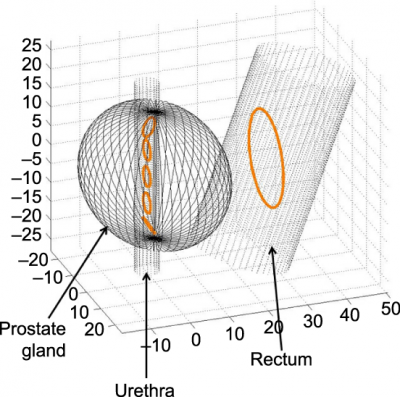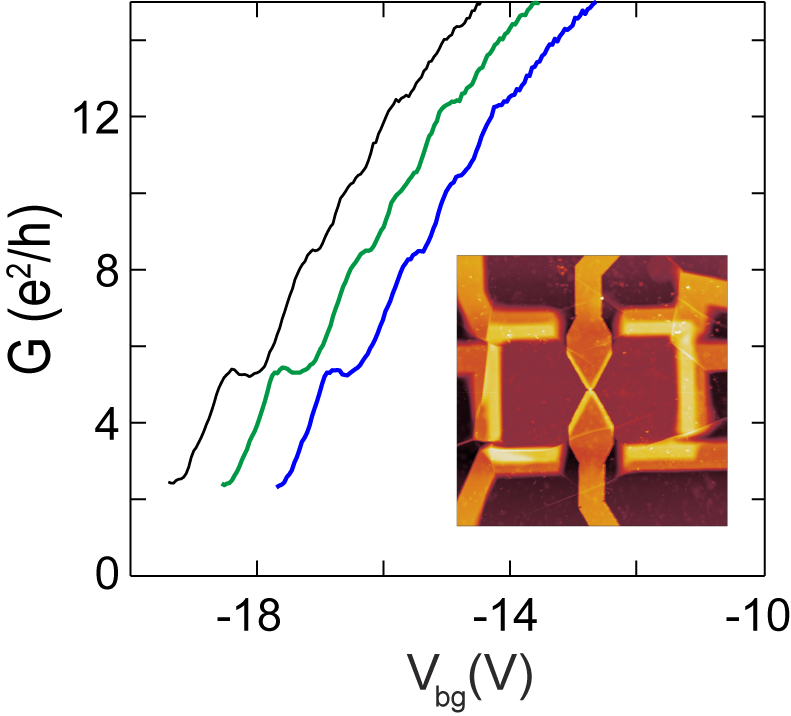Current events
Next talk tomorrow at 11:30 by Katrin Hecker!
News 06.06.2025
New publication:Anisotropic supercurrent suppression and revivals in a graphene-based Josephson junction under in-plane magnetic fields
Site Content:
18.09.2017
Recent press highlights about the newly established Aachen Graphene & 2D Materials Centre
Press highlight in the RWTH News - The World’s Thinnest Material and at the Graphene-Flagship web page (Launch of the Aachen Graphene & 2D-Materials Centre – for more details see Graphene-Flagship.EU.

14.09.2017
Neue Publikation: Die akustische Stoppuhr in phyphox
MNU Journal 5, 322-327 (2017)
Die kostenlose App phyphox (Android und iOS) bietet viele neuartige Funktionen, um Physikexperimente mithilfe der gängigen
Smartphone-Sensoren durchzuführen. Ein besonderes Werkzeug stellt hier die akustische Stoppuhr dar, welche für
Schüler/innen eine intuitive Methode bietet, die Schallgeschwindigkeit zu bestimmen oder Zeitmessungen bei Fallexperimenten
durchzuführen.

04.09.2017
New publication: Establishment of a biophysical model to optimize endoscopic targeting of magnetic nanoparticles for cancer treatment

Int. J. Nanomedicine 12, 5933(2017) Superparamagnetic iron oxide nanoparticles (SPION) may be used for local tumor treatment by coupling them to a drug and accumulating them locally with magnetic field traps, that is, a combination of permanent magnets and coils. Thereafter, an alternating magnetic field generates heat which may be used to release the thermosensitively bound drug and for hyperthermia. Until today, only superficial tumors can be treated with this method. Our aim was to transfer this method into an endoscopic setting to also reach the majority of tumors located inside the body. To find the ideal endoscopic magnetic field trap, which accumulates the most SPION, we first developed a biophysical model considering anatomical as well as physical conditions. Entities of choice were esophageal and prostate cancer. The magnetic susceptibilities of different porcine and rat tissues were measured with a superconducting quantum interference device. All tissues showed diamagnetic behavior. The evaluation of clinical data (computed tomography scan, endosonography, surgical reports, pathological evaluation) of patients gave insight into the topographical relationship between the tumor and its surroundings. Both were used to establish the biophysical model of the tumors and their surroundings, closely mirroring the clinical situation, in which we could virtually design, place and evaluate different electromagnetic coil configurations to find optimized magnetic field traps for each tumor entity. By simulation, we could show that the efficiency of the magnetic field traps can be enhanced by 38-fold for prostate and 8-fold for esophageal cancer. Therefore, our approach of endoscopic targeting is an improvement of the magnetic drug-targeting setups for SPION tumor therapy as it holds the possibility of reaching tumors inside the body in a minimal-invasive way. Future animal experiments must prove these findings in vivo.

08.08.2017
Simulations on the Influence of Spatially Varying Spin Transport Parameters on the Measured Spin Lifetime in Graphene Non-Local Spin Valves

Physica Status Solidi B, 1700293(2017) Spin transport properties of graphene non-local spin valve devices are typically determined from Hanle spin precession measurements by using a simplified solution of the one-dimensional Bloch-Torrey equation which assumes infinitely long transport channels and uniform spin transport parameter. We investigate the effects of a finite graphene size and explore the influence of spatially-varying transport parameters on the measured Hanle curves by finite element simulations. We assume enhanced spin dephasing in the contact-covered graphene areas with additional Fermi level pinning and explore the influence of non-magnetic reference electrodes which are not properly decoupled from graphene. In experiments, it is typically observed that the spin lifetime increases with increasing charge carrier density. None of our simulations can reproduce this trend indicating that this dependency originates from spin transport through graphene areas which are not covered by contacts. We find that the extracted spin lifetime might be overestimated in flakes which are shorter than the spin diffusion length. Moreover, contact-induced spin dephasing leads to an overall reduction of the extracted spin lifetime. Additionally, we show that non-magnetic reference electrodes may also influence the measured spin lifetime even though they are not part of the transport area under investigation.

01.08.2017
Kick-off for the Aachen Graphene & 2D-Materials Center

July 24th was the starting date for the Aachen Graphene & 2D-Materials Center, a joint competence center of RWTH Aachen University and AMO GmbH. The Aachen Graphene & 2D-Materials Center integrates the already ongoing activities of several research groups at RWTH Aachen University and AMO GmbH in the fields of physics, material science and electrical engineering with the primary goal to efficiently bridge the gap between fundamental science and applications.
The mission of the Aachen Graphene & 2D-Materials Center is to exploit the unique properties of graphene, two-dimensional (2D) materials and 2D-heterostructures from a fundamental and applied point of view. The activities of the Center will address the challenges of future technology including high-frequency electronics, flexible electronics, energy-efficient sensing, photonics as well as spintronics and valleytronics, for which graphene and related 2D-materials have proven to be a unique enabling platform. Therefore, the center brings together the complementary expertise of Aachen’s world leading research groups and puts the Aachen Graphene & 2D-Materials Center in a leading position in Germany and Europe.
The founding members are Prof. Christoph Stampfer (RWTH and spokesman of the center), Prof. Max Lemme (AMO and RWTH), Prof. Markus Morgenstern (RWTH), Prof. Renato Negra (RWTH) and Dr. Daniel Neumaier (AMO) who are also active in the EU Flagship Project Graphene.
For further information please visit: www.graphene-center-aachen.de.

31.07.2017
SPICE YouTube Channel
To disseminate tutorials and talks of the "Spin Dynamics in the Dirac Systems Workshop" there is a YouTube channel containing all the workshop’s talks. Click
here.
This interdisciplinary workshop offered a platform for the knowledge exchange between diverse novel condensed matter domains such as topological insulators and superconductors, Weyl physics, topological Josephson junctions, spintronics in graphene, spin valves, spin-logic devices, quantum magnetism, spin lattices, frustrated magnets, spin liquids, non-trivial spin states, etc.

26.07.2017
New publication: From Diffusive to Ballistic Transport in Etched Graphene Constrictions and Nanoribbons

Ann. Phys. 529, 1700082(2017) Graphene nanoribbons and constrictions are envisaged as fundamental components of future carbon-based nanoelectronic and spintronic devices. At nanoscale, electronic effects in these devices depend heavily on the dimensions of the active channel and the nature of edges. Hence, controlling both these parameters is crucial to understand the physics in such systems. This review is about the recent progress in the fabrication of graphene nanoribbons and constrictions in terms of low temperature quantum transport. In particular, recent advancements using encapsulated graphene allowing for quantized conductance and future experiments towards exploring spin effects in these devices are presented. The influence of charge carrier inhomogeneity and the important length scales which play a crucial role for transport in high quality samples are also discussed.

21.07.2017
New publication: Dry transfer of CVD graphene using MoS2-based stamps

Phys. Status Solidi RRL 11, 1700136(2017) Recently, a contamination-free dry transfer method for graphene grown by chemical vapor deposition (CVD) has been reported that allows to directly pick-up graphene from the copper growth substrate using a flake of hexagonal boron nitride (hBN), resulting in ultrahigh charge carrier mobility and low overall doping. Here, we report that not only hBN, but also flakes of molybdenum disulfide (MoS2) can be used to dry transfer graphene. This, on one hand, allows for the fabrication of complex van-der-Waals heterostructures using CVD graphene combined with different two-dimensional materials and, on the other hand, can be a route toward a scalable dry transfer of CVD graphene. The resulting heterostructures are studied using low temperature transport measurements revealing a strong charge carrier density dependence of the carrier mobilities (up to values of 12,000 cm2/(Vs)) and the residual charge carrier density fluctuations near the charge neutrality point when changing the carrier density in the MoS2 by applying a top gate voltage.

